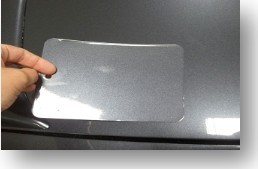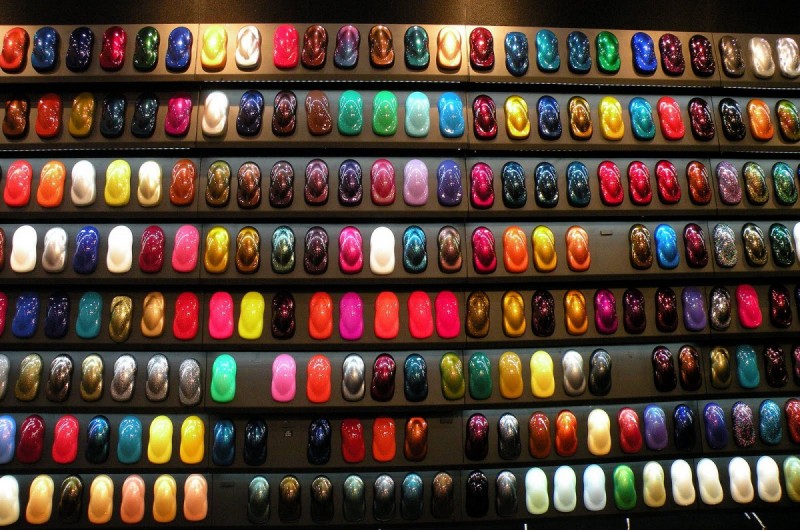Question:
Someone backed into the front fender of my car. The auto body shop has decided to replace the fender. They claim to have a high-tech way to match the original paint with their paint brand. In order to make the repair they said they will have to paint some of the adjacent area like the hood, bumper and door. So my question is if they have a high tech paint matching system, why do they have to also paint the new fender, hood, bumper and door since they are not damaged?
Answer:
First a little background on how auto makers and auto body shops get their paint formulations. Auto manufacturers create a "standard" for every color that they put on their vehicles and they send that out to all the auto body paint suppliers to create a matching formulation. The individual paint companies then have to attempt to match their paint to that "standard". Car makers are not loyal to any particular paint manufacturer; instead they go strictly by price when deciding whose paint to put on their vehicles. The manufacturer will buy a certain volume of paint and when it's gone they will get new bids for more of the same color. Also worth noting is that conditions in the plant will vary from day to day temperature, humidity, how long the paint has been flowing through the system...and this will create variations in the color even in cars of the same year and paint code.
When paint companies create a formula to match the "standard" they will also create "alternate" formulas to match known variations in the paint on cars coming from the car manufacturers. Some paint codes will have many, many "alternates", while others may just have one or two. For example, Toyota's Desert Sand Mica (4Q2) has a "standard" formula and 13 "alternate" formulas.
Also, most auto manufacturers are now using water-borne paint on their cars for environmental reasons but most body shops are still using solvent-borne paints to refinish them during the repair process with the exception of auto body shops on the west coast where waterborne paint is a government mandate. The two types of paint use different pigments that also cause issues when trying to match colors.
Variations in viewing angle
Automotive paint will also vary in color depending on the angle it is being viewed from and the light source used. Paint will look different inside a body shop versus outside in natural daylight. matching automotive paint is much harder than the average person understands.
Silver and other similar metallic paints are the hardest paints for a body shop to match. The reason for this is because they are light colors and contain a high content of metallic flakes that give it that “bright” appearance in full sun.

Replicating this exact same finish on an auto body repair is very difficult to do if not completely impossible. There are simply too many variations that can throw the match out of whack. For example, the type of paint gun used could make a difference, the mixing volume at the spray nozzle will make a difference, the angle the painter uses will make a huge difference in the way the metal flake settles.
When you look at a car close up, you can only view one section at a time, especially when painting it. When you stand back or view it at an angle, the differences in the paint match are very obvious if there is a discrepancy.
So in order to “trick” the eye into seeing one continuous shade of the same color, a little extra technique is involved.
An inexperienced painter can get the paint codes right off of the car, feed them into the computer and mix up a batch of paint that matches the manufacturer formulation. That same inexperienced technician can go ahead and spray the panel, bolt it on and send you on your way, but you will not be happy the first time you see your car in full sun and at a distance.
An experienced technician will mix up the same formulation and will spray a card, let it dry and then take the card and car out into the sunlight to test for a match. They will note if it matches or will make slight tweaks to the formula based on color matching experience.
I have personally seen painters spray a dozen or so of these test cards on a difficult color before they found a good match. Keep in mind that these alterations to the formula were made by the painter who trusted is eye and his experience to dial in the color.
The next step once the paint match is close is to blend the new color into the other areas of the car that make the new color gradually spread into the existing paint color. This technique has been done for decades and is not a shortcut method of fixing your car.

What is required for a seamless color match is a seamless spray pattern and stopping the new painting short at the edge of a panel without blending into the adjacent panels would look mismatched and obvious.
Cars have many contours which create highlights and shadows and the color never looks consistent on any single panel. When your auto painter repaints your car, they will know instinctively where to end a blended area based on what your eye will see and based on the shape of your car’s body panels. Sometimes they paint up to a certain line, sometimes they fade into the middle of a panel. It all depends, on the repair, the shape, the color and the painters preferred methods.
So in order to fully match your cars newly repaired panels to the undamaged panels, some blending must occur.


